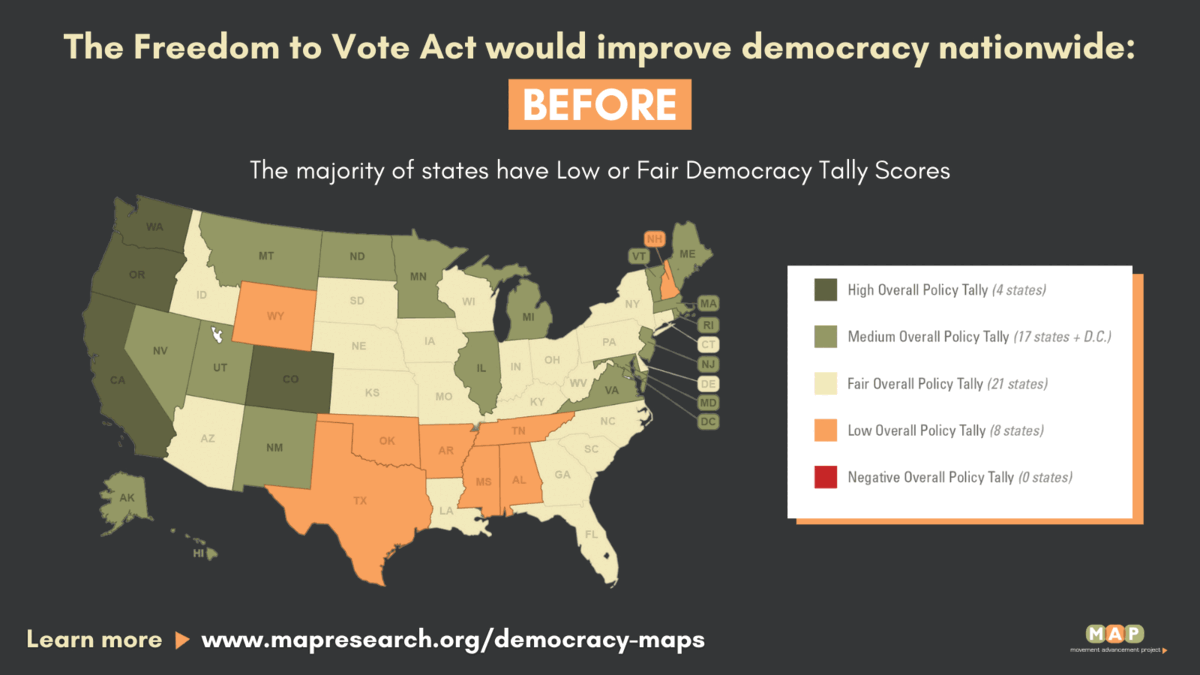FOR IMMEDIATE RELEASE
MEDIA CONTACTS: Rebecca Farmer, Movement Advancement Project
media@mapresearch.org | 303-578-4600 ext 122
January 13, 2022—As Congress and states across the nation prepare to battle over voting rights legislation, the Movement Advancement Project’s (MAP) new
Democracy Maps initiative released analysis of how the national landscape—across 44 state election laws and policies—would change if Congress passed the federal Freedom to Vote Act.
Currently, nearly 60% of Americans live in states with inadequate voting laws, according to the Democracy Maps. If the Freedom to Vote Act passed, state voting policies would shift dramatically to 100% of Americans living in states with at least a medium Democracy Tally.
It also emphasizes the impact the Freedom to Vote Act would have for voters nationwide, including: establishing national standards for
automatic voter registration and same day voter registration, expanding
voting locations and
early voting,
cutting wait times to vote in person, streamlining
voter ID requirements, and protecting
election independence and integrity. If Congress passes this legislation, every state would have either a High or Medium Democracy Tally rank.
“Access to voting and civic engagement shouldn’t depend on where you live. A cornerstone of any democracy is free, fair, and independent elections where voting is encouraged rather than restricted. The Freedom to Vote Act would help America uphold its promise of democracy and freedom, give all citizens a more equal voice, and protect our democracy from those who want partisan, rather than independent, oversight of elections,” said Ineke Mushovic, Executive Director of the Movement Advancement Project.
Although the Freedom to Vote Act has been opposed by all Republicans in Congress,
polling shows that the legislation has majority support from the public, including majority support from Republican voters.
The
Democracy Maps website allows researchers and journalists to compare and contrast states, look nationally by issue, do a deep dive on a particular state across 44 laws and policies, and see citations for all cited laws, policies, and data.
Among the voting laws and policies tracked in the Democracy Maps:
- Automatic voter registration laws
- Early voting
- State legislative interference in elections
- Provisional ballot procedures
- Absentee ballot return procedures
A recent companion report,
State of Democracy: How Election Laws Differ Around the Country, further illustrates the stark differences in voter policies around the country that necessitate federal voting legislation.
###
MAP's mission is to provide independent and rigorous research, insight and communications that help speed equality and opportunity for all. MAP works to ensure that all people have a fair chance to pursue health and happiness, earn a living, take care of the ones they love, be safe in their communities, and participate in civic life.


